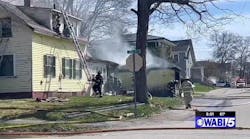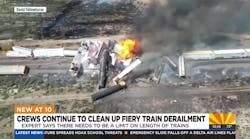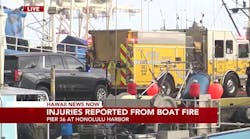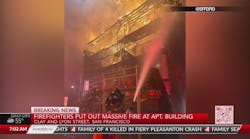The primary responsibility of your fire department is to deliver fire, rescue and life-safety services to your community. To provide these services, fire departments have historically placed stations throughout their response areas based on the premise of a timely response; i.e., arriving on scene with sufficient resources to initiate fire, rescue or emergency medical activities in an acceptable response time.
Determining what is an acceptable response time as well as what constitutes sufficient resources should be decided, primarily, by the elected officials whose responsibility it is to set policies to serve the greatest good of the community. Fire officials should establish, cooperatively through dialogue with elected officials and city management, what the response times and resources should be. Establishing these performance benchmarks is central to determining the distribution and concentration of fire station coverage.
“Concentration” and “distribution”
The term “concentration” is used to describe the spacing of multiple fire department resources arranged so that an initial effective response force can arrive on scene within the established time frames. An effective response force is a set of resources that will stop the escalation of the emergency incident. Differing incident types require different levels of initial and secondary staffing based on the nature of the incident. “Distribution” is used in to describe the physical location of fire stations ensure a rapid response and support the effective response force.
Generally, fire station distribution and concentration are based on development, risk analysis and response-time requirements. Other important criteria include the organizational staffing model and station overlap for support coverage. Unfortunately, the National Fire Protection Association (NFPA) and International City/County Management Association (ICMA) are silent on the matter of “when” and “where” fire stations should exist. The Insurance Services Office (ISO) does provide guidelines for fire station spacing by the ICMA has characterized the ISO standards as antiquated. According to the ICMA consultant’s presentation, fire stations are located 1½ miles apart to meet the ISO requirements. This requirement is allegedly based in how far horses could run at full gallop. In defense of the ICMA, if that is true, the standard is out of date.
Critical criteria in station placement
Critical criteria that should be considered to determine adequate distribution and concentration of fire stations include:
• Desired response times. When considering this important factor, assign a percentage of responses that will meet the desired response-time criteria. For example, “For 80% of emergency responses, the department shall place a suppression apparatus on scene in not more than eight minutes for the first alarm assignment” (and the resources of the first alarm need to be established as well).
Some fire departments rely on NFPA 1710, Standard for the Organization and Deployment of Fire Suppression Operations, Emergency Medical Operations and Special Operations to the Public by Career Fire Departments, or NFPA 1720, Standard for the Organization and Deployment of Fire Suppression Operations, Emergency Medical Operations and Special Operations to the Public by Volunteer Fire Departments, as response performance measures. Variables to consider in determining response time are infrastructure features such as road type, design and traffic pattern. What is the area being served? For example, a rural area may have longer response times due to the larger geographic area and the limited availability of resources.
• How services provided impact the model. Providing medical responses in addition to fire suppression may influence the design of the model. Medical responses vastly increase the number of calls for service and increase the number of times when response times are critical.
• Appropriate staffing model. One essential consideration in evaluating response times and station location is the organizational staffing model. It is strategic for volunteer departments to locate stations in areas volunteers live and/or work. The station location is based on responder availability. Recruiting and retaining firefighters assigned to s station located in an industrial area will be challenging. Volunteer departments often respond multiple apparatus from one station, so the need to have sufficient personnel residing or working in proximity to the station is important.
Alternatively, career fire departments often respond with one or two apparatus from each station and dispatch multiple stations to significant alarms. This can help meet both the response-time and staffing benchmarks.
• Historical fire and medical activity. Using historical response data such as event history, activity levels and risk characteristics (fire potential, occupant exposure), it may make sense to locate fire stations near high-population areas that experience high call volumes. If the service area has a significant commercial or industrial area, it may also be essential to ensure appropriate resources are located to ensure those community assets are protected.
• Shared services with neighboring departments. Consideration should be given to the availability of mutual aid partners, particularly those that border your jurisdiction. The reciprocal use of automatic mutual aid to provide services may reduce the need for fire stations. This is particularly applicable when a neighboring department is geographically close and can provide quick service. Collaborate on sharing services.
• Using technology. The use of technology can help in the justification of station locations by offering quantifiable data to support location decisions. Modern geographic information system (GIS) computer software can provide accurate data about demand and response times. The old concentric circles on a map technique offers limited value when compared to the data derived through the application of GIS technology. Inputs such as travel time, travel speed, roadway variances, time of day and day of week analysis can be projected by GIS technology onto mapping to visually compare response data.
Evidence-based response data
Station overlap as well as fire district demand zone for each fire station can be calculated and displayed. Layering of data can be added to demonstrate different response routes, coverage overlap, percent of area covered in anticipated response time and areas that fall outside the desired response time.
Municipal services are challenged to maintain a balanced budget, without new revenue streams, while having little or no impact on the services delivered. Fire departments focused on maintaining core services need to embrace data to drive decisions and focus on what they are striving to achieve. Focus on the desired outcome. Providing evidence-based response data can be valuable information in determining and justifying resource allocation.





